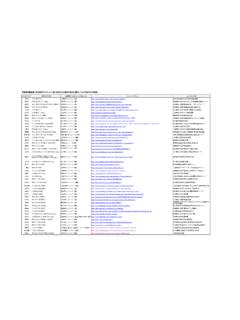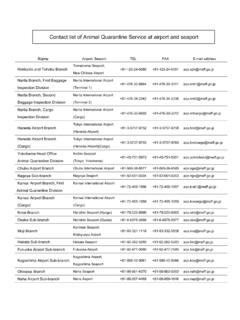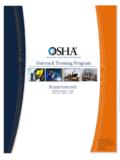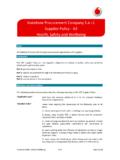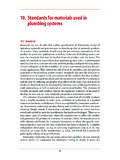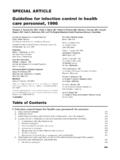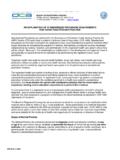Transcription of Animal health requirements for beef and beef products to ...
1 1 Animal health requirements for beef and beef products to be exported to Japan from the United States of America Animal health requirements for beef and beef products to be exported to Japan from the United States of America (United States) are as follows: (Definitions) For the purpose of the Animal health requirements : Cattle means domesticated bovine animals (Bos taurus and Bos indicus only) born and raised in the United States or legally imported into the United States from a country deemed eligible by the Japanese government to export beef or beef products to Japan.
2 Beef and beef products means all edible parts of cattle and products derived from such parts of cattle, as described in the Federal Meat Inspection Act (FMIA) and specified in the Department of Agriculture (USDA) Food Safety and Inspection Service (FSIS) Export Library for Japan. Designated facility includes any slaughtering or processing establishment for beef and beef products that operates under USDA inspection. Outbreak means detection of specific pathogen, antigen or antibody of a disease as well as appearance of Animal showing clinical symptoms of the diseases.
3 The Japanese Animal health authorities means Animal health Division, Food Safety and Consumer Affairs Bureau, Ministry of Agriculture, Forestry and Fisheries of Japan. (General requirements ) 1. The United States is free from foot-and-mouth disease (FMD) and rinderpest, and vaccination against FMD and rinderpest is prohibited in the United States. 2. Importation into the United States of cloven-hoofed animals that have been vaccinated against FMD or rinderpest is prohibited. 3. The Government will continue to maintain measures to prevent introduction, to control spread, and to detect bovine spongiform encephalopathy (BSE).
4 These measures meet or exceed World Organization for Animal health (OIE) guidelines for a controlled risk country and include appropriate specified risk material (SRM) removal, a feed ban, and a surveillance program. The United States, consistent with its World Trade Organization (WTO) obligations, provides notice to all trading 2 partners, including Japan, regarding the repeal or modification of any BSE-related measure. 4. A system-wide problem, such as repeated non-compliance, may result in the suspension of the Animal health requirements . ( requirements for designated facilities) 5.
5 To be eligible to export beef and beef products to Japan, a designated facility must implement a USDA Less Than 30 Months Age Verification Quality System Assessment Program (QSA Program GVD1035A) (hereinafter QSA LT-30 Program ) that is approved by USDA s Agricultural Marketing Service (AMS). 6. USDA must inform the Japanese Animal health authorities of the name, address, and establishment number of each eligible designated facility in advance of that facility exporting beef or beef product to Japan by providing access to the approved list of eligible designated facilities on the Internet at This list will be maintained and updated by AMS.
6 7. USDA must confirm through an ordinary monitoring or periodic audit that designated facilities are fulfilling the required conditions in paragraph 5. If during an ordinary monitoring or periodic audit of a designated facility USDA identifies a non-compliance with the conditions in paragraph 5, USDA must immediately stop certifying beef and beef products produced at the non-compliant facility for export to Japan. USDA may revoke the designation of the non-compliant facility and must inform the Japanese Animal health authority of the name, address, and establishment number of that facility.
7 After verifying that acceptable corrective actions have been taken USDA may re-designate the revoked facility. ( requirements for shipment) 8. The beef and beef products will be produced and handled in a manner to prevent contamination with any causative agents of Animal infectious diseases. Clean and sanitary wrappings and/or containers such as cardboard boxes must be used to pack the exported beef to Japan. 9. If an outbreak of FMD or rinderpest is confirmed in the United States, USDA must immediately stop certification of beef and beef products to be exported to Japan.
8 If beef and beef products exported to Japan have been certified and are in transit to Japan at the time of the outbreak, the shipment will be prohibited entry into Japan, except where the USDA can demonstrate that the shipment definitely bears no relation (such as, time of shipment, region of origin, route of transit) to the outbreak of the said diseases. 10. If a BSE case is detected in United States and it is discovered to have epidemiological relevance to any 3 beef and beef product exported to Japan, USDA must notify immediately the Japanese Animal health authority with the relevant information.
9 11. In the case where exported beef and beef product is transported to Japan by way of third countries, that product must be stored in an enclosed ocean/air vessel container. USDA must close the container with an official seal. A copy of the official seal must be provided in advance to the Japanese Animal health authority. In case the official seal with the container had been broken or removed prior to the time of import inspection after the container s arrival in Japan, Japan may prohibit the import into Japan of the beef contained in that container.
10 ( requirements for beef and beef products exported to Japan) 12. Cattle slaughtered for the production of beef to be exported to Japan (hereinafter the slaughtered cattle ) must have been born and raised only in the United States, or legally imported from a country recognized by the Japanese Animal health authorities as eligible to export beef and beef products to Japan. 13. The slaughtered cattle were not suspect or confirmed BSE cases, or cohorts of BSE cases, as defined in the Terrestrial Animal health Code adopted by the World Organization for Animal health (OIE).



